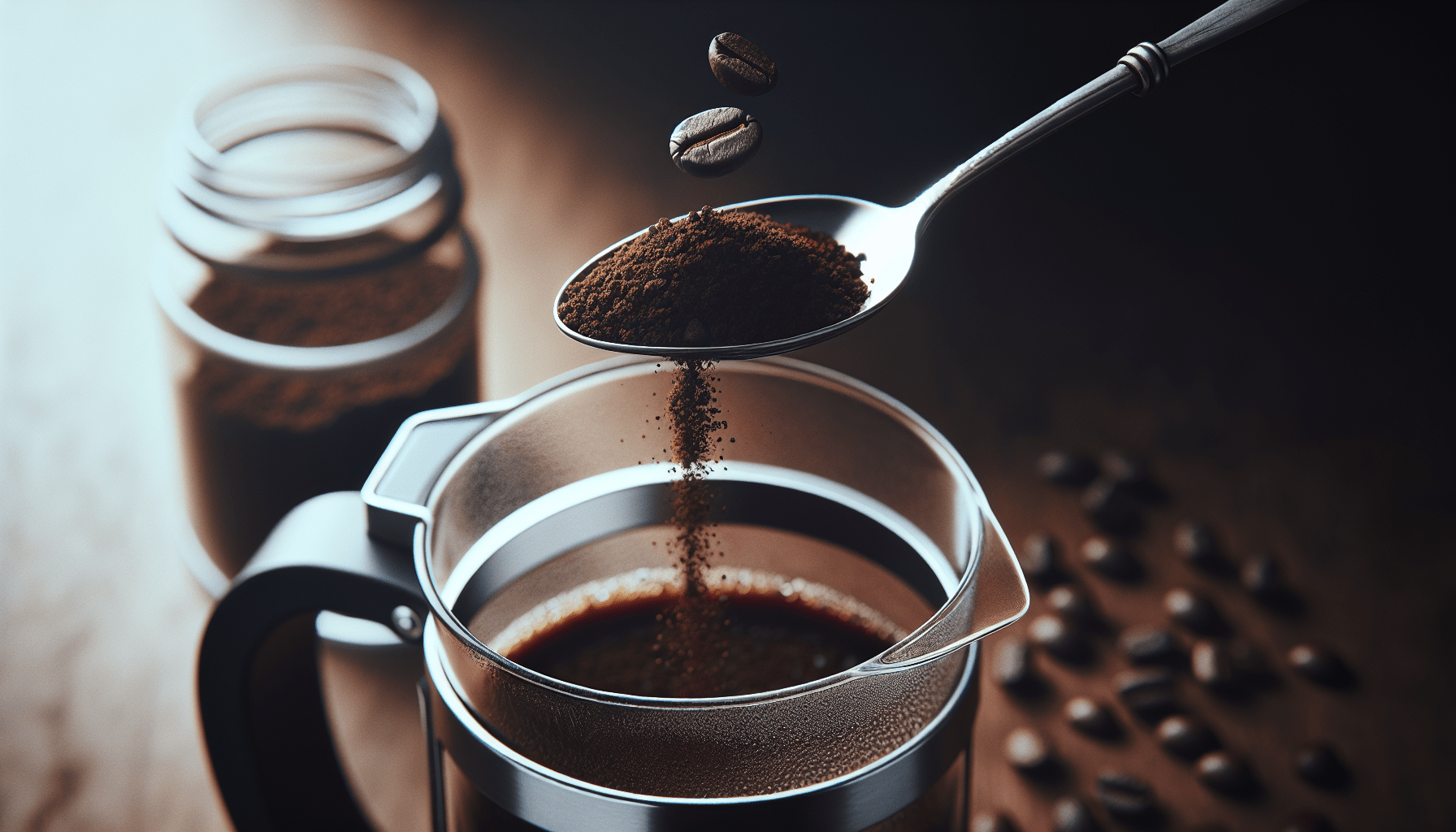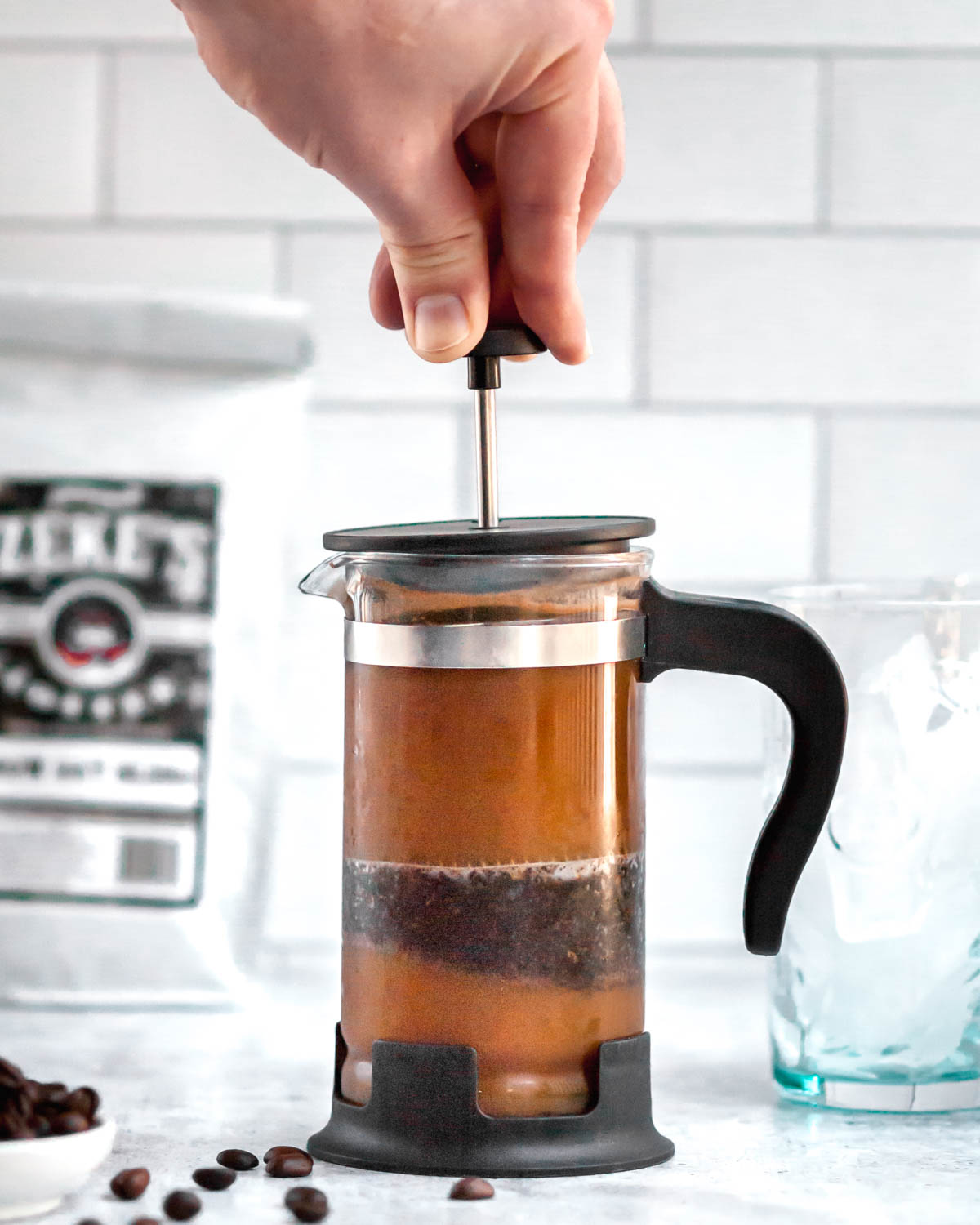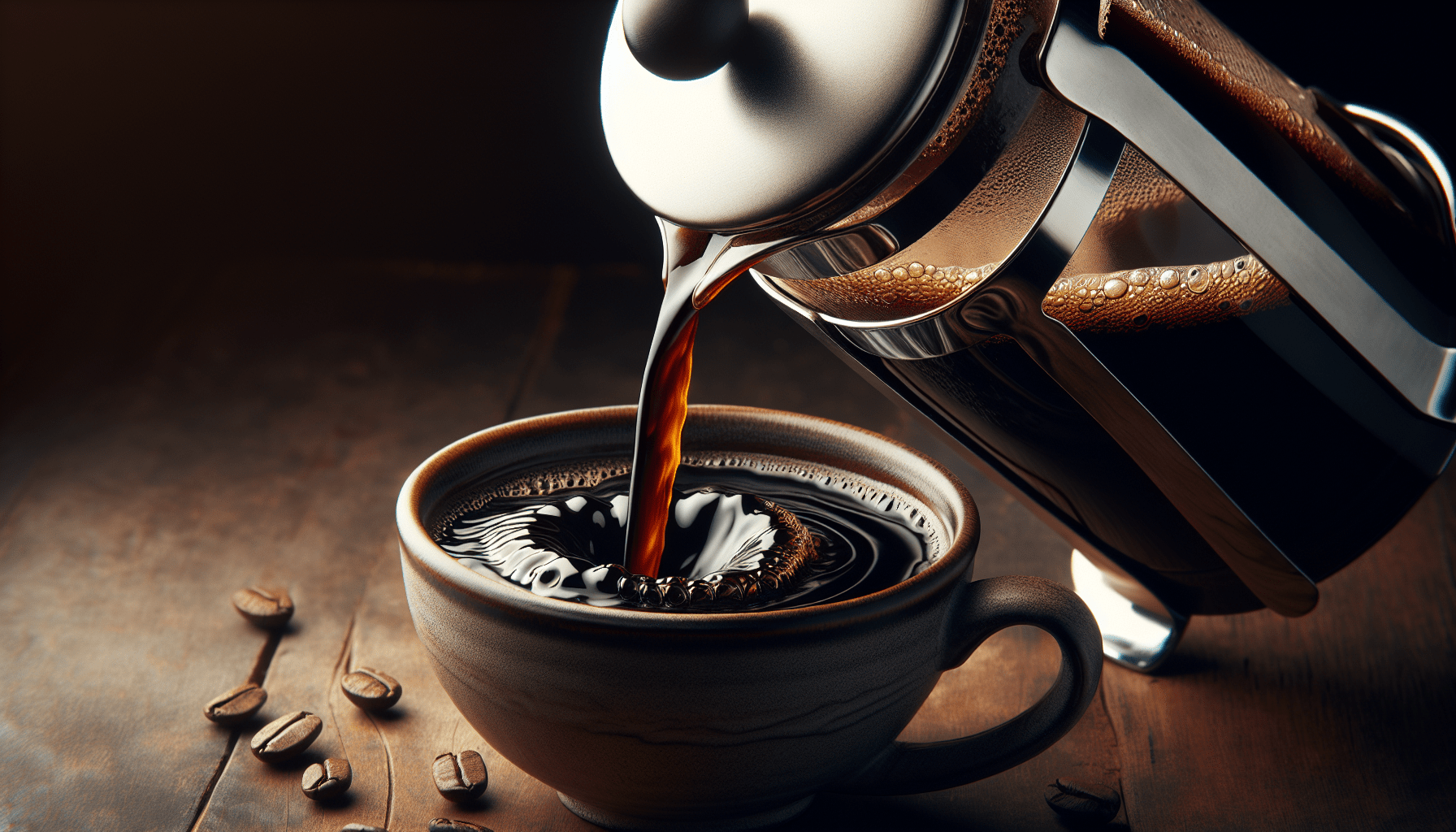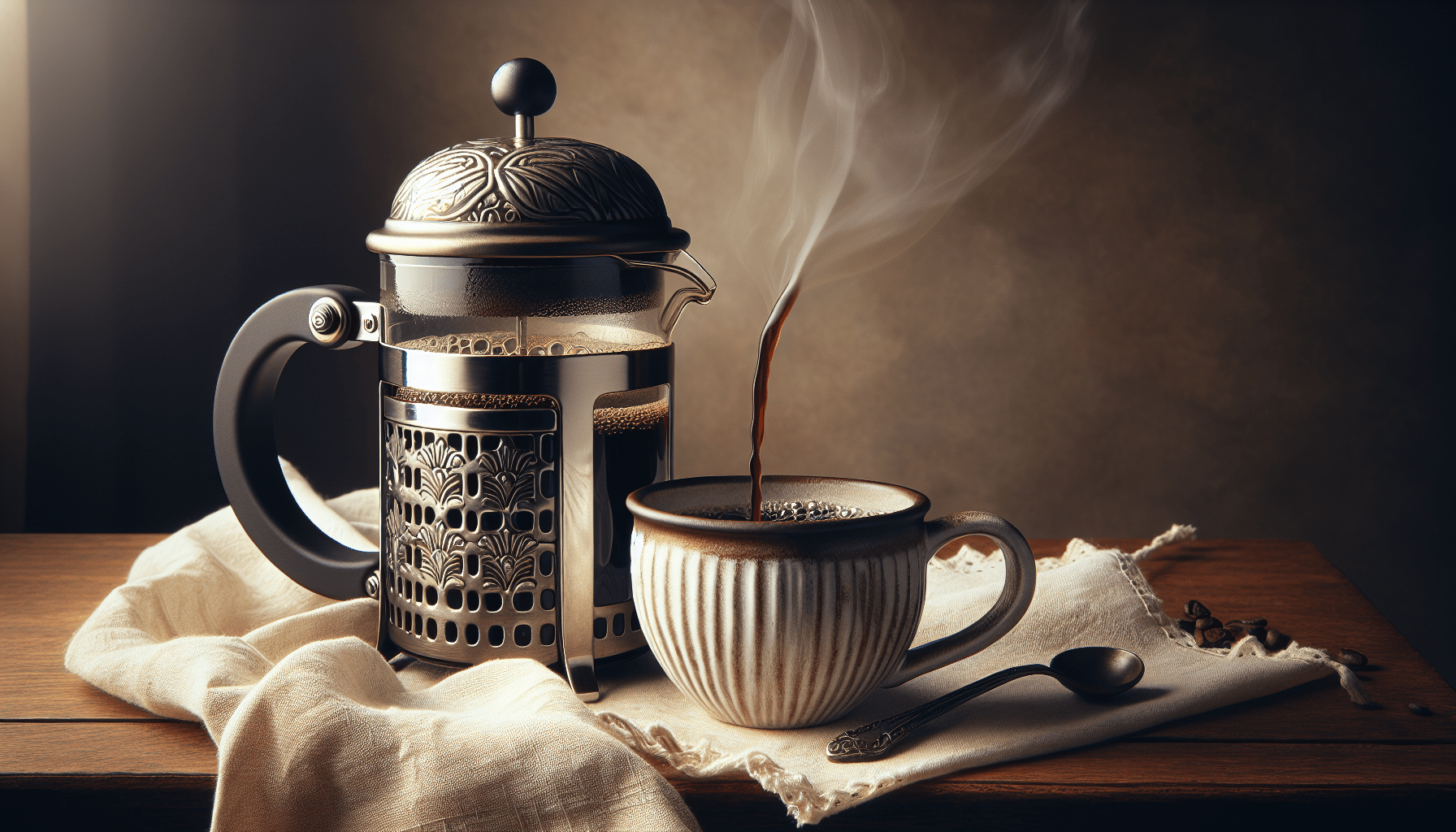If you’re a coffee lover and enjoy brewing your own cup of joe, you may be wondering how long you should let coffee steep in a French press. Getting the perfect brew can make all the difference in taste and richness, and finding the optimal steeping time is key. It’s not a one-size-fits-all answer, as personal preference and the type of coffee you’re using can play a role. In this article, we’ll explore the factors that influence steeping time, some general guidelines, and how to achieve that perfect cup of French press coffee.
Factors affecting steeping time
Grind size
The grind size of your coffee beans can greatly impact the steeping time in your French press. Generally, the finer the grind, the quicker the extraction process will be. A finer grind will allow for a larger surface area of the coffee grounds to come into contact with the water, resulting in a faster and more intense extraction. On the other hand, a coarser grind will require a longer steeping time as it takes longer for the water to fully extract the flavors and oils from the coffee grounds.
Coffee to water ratio
The coffee to water ratio is another crucial factor that affects the steeping time in a French press. The ideal ratio for a rich and balanced cup of coffee is typically around 1:15 – 1:17, meaning 1 gram of coffee for every 15-17 grams of water. If you use too little coffee compared to the amount of water, the extraction process will be faster, resulting in a weaker and underwhelming cup of coffee. Conversely, using too much coffee can lead to a longer steeping time and potentially overextracted flavors.
Water temperature
The water temperature during the steeping process is also important in determining the optimal steeping time. The ideal water temperature for brewing coffee in a French press is around 195-205°F (90-96°C). If the water is too hot, it can result in overextraction and a bitter taste. Conversely, if the water is not hot enough, the extraction process will be slower, leading to underextracted flavors. Finding the right water temperature will contribute to a more balanced and flavorful cup of coffee.
Recommended steeping time
General guidelines
While there is no fixed rule for the ideal steeping time in a French press, a commonly recommended range is around 4-6 minutes. This range provides a good starting point for achieving a balanced extraction. However, personal preference and desired strength of the coffee can also play a role in determining the ideal steeping time. It is important to experiment and adjust the steeping time based on your taste preferences.
Experimenting with steeping time
To find your perfect cup of coffee, it is recommended to experiment with different steeping times. Start with the general guidelines mentioned earlier and gradually adjust the steeping time to find your desired flavor profile. For example, if you prefer a bolder and stronger cup of coffee, you may want to extend the steeping time towards the higher end of the recommended range. On the other hand, if you prefer a milder and less intense cup, a shorter steeping time may be more suitable.
Understeeping
Effects of understeeping
Understeeping occurs when the coffee grounds are not given enough time to fully release their flavors and aromas into the water. This can result in a weak and disappointing cup of coffee. The flavors may be muted, and the coffee may lack the complexity and depth that a longer steeping time can provide. Additionally, understeeping can lead to a lack of body and mouthfeel in the coffee, resulting in a thin and unsatisfying texture.
Signs of understeeped coffee
There are a few signs that can indicate that your coffee has been understeeped. First, the aroma may be less pronounced, with a mild fragrance instead of a strong and enticing scent. The taste of the coffee may also be weak and lacking in complexity, with a watery or thin texture. If you notice these signs, it may be a sign that you need to increase the steeping time to allow for a more complete extraction of flavors from the coffee grounds.
Oversteeping
Effects of oversteeping
Oversteeping, on the other hand, occurs when the coffee grounds are left in contact with the water for too long. This can result in an overly bitter and harsh cup of coffee. The prolonged exposure to hot water can lead to overextraction, causing the coffee to become imbalanced and unpleasant to drink. The flavors may become overly strong and overpowering, masking the subtle nuances and characteristics of the coffee.
Signs of oversteeped coffee
There are several signs that can indicate that your coffee has been oversteeped. The aroma may become overly pungent and bitter, with a burnt smell. The taste of the coffee may also be bitter and astringent, with an unpleasant aftertaste. Oversteeped coffee may have a thick and heavy mouthfeel, which can be overwhelming. If you notice these signs, it is recommended to reduce the steeping time to avoid overextraction of flavors.
Adjusting steeping time for personal preference
Stronger coffee
If you prefer a stronger and more robust cup of coffee, you can adjust the steeping time accordingly. Increase the steeping time towards the higher end of the recommended range, allowing for a more complete extraction of flavors from the coffee grounds. This will result in a bolder and more intense cup of coffee, with a stronger flavor profile and increased body.
Weaker coffee
For those who prefer a milder and less intense cup of coffee, a shorter steeping time is recommended. This will result in a lighter and more delicate flavor, with a smoother and less pronounced texture. Experiment with reducing the steeping time within the recommended range to find your desired level of strength and intensity.
Alternative brewing methods
Drip brewing
Drip brewing is a popular alternative to French press brewing and has its own recommended steeping time. In drip brewing, hot water is poured over a bed of coffee grounds, allowing it to slowly drip through and extract the flavors. The recommended steeping time for drip brewing is typically around 4-5 minutes. However, different drip brewing devices may have their own specific guidelines, so it is important to follow the instructions provided with your particular equipment.
Pour-over brewing
Pour-over brewing is another popular method that allows for more control over the steeping time. In this method, hot water is poured over a filter containing coffee grounds, allowing the water to slowly drip through. The steeping time for pour-over brewing can vary depending on factors such as the grind size, coffee to water ratio, and personal preference. Generally, a recommended starting point is around 2-4 minutes, but it is important to experiment and adjust to achieve your desired flavor profile.
Cold brew
Cold brew is a unique brewing method that involves steeping coffee grounds in cold water for an extended period, typically 12-24 hours. Unlike hot brewing methods, cold brew requires a much longer steeping time to extract the flavors from the coffee grounds. This results in a smooth and low-acidity coffee concentrate that can be diluted with water or milk. Cold brew is known for its unique flavor profile and is often preferred by those who enjoy a milder and less acidic cup of coffee.
Equipment maintenance
Cleaning the French press
Properly cleaning your French press is essential to maintain its performance and ensure a great tasting cup of coffee. After each use, disassemble the French press and rinse out any remaining coffee grounds. Use warm soapy water and a soft brush or sponge to clean the plunger, filter, and pot. Rinse thoroughly to remove any soap residue. Avoid using abrasive materials that can scratch the glass or metal parts of the French press. Allow all components to fully dry before reassembling.
Storing the French press
When not in use, it is important to properly store your French press to prevent any damage and maintain its longevity. Make sure to fully clean and dry the French press before storing. Store it in a cool and dry place, away from direct sunlight and moisture. If possible, disassemble the French press and store the components separately to prevent any pressure on the plunger and filter. Proper storage will help preserve the quality of your French press and ensure optimal performance.
Conclusion
Steeping time plays a vital role in achieving a delicious cup of coffee in a French press. Factors such as grind size, coffee to water ratio, and water temperature all contribute to the ideal steeping time. Understanding the effects of understeeping and oversteeping can help you adjust the steeping time to achieve your desired flavor profile. Additionally, exploring alternative brewing methods and properly maintaining your French press will further enhance your coffee brewing experience. Embrace the versatility of the French press and enjoy the process of finding your perfect cup of coffee through the art of steeping.




